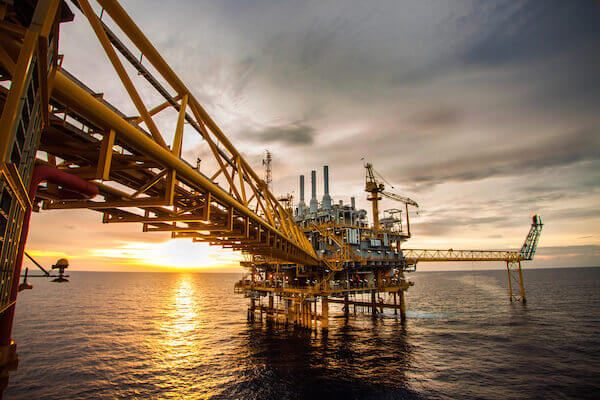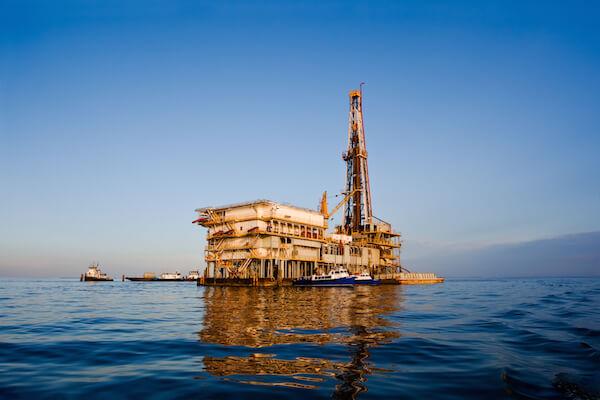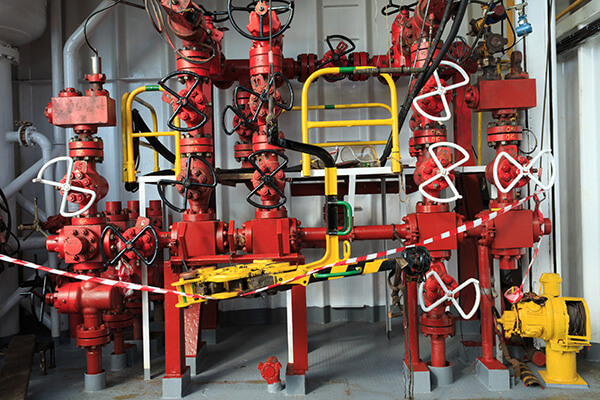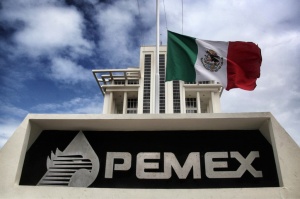“Vista Oil & Gas, with backing from private equity firm Riverstone Capital, will launch an initial public offering (IPO) on Mexico’s stock exchange on Aug. 11, according to three sources with knowledge of the deal and a document seen by Reuters.”
“The IPO would mark the entry into Mexico’s stock exchange of the country’s first publicly traded oil company, four years after a landmark constitutional oil reform ended the decades-long monopoly enjoyed by national oil company Petroleos Mexicanos, better known as Pemex.”

“A Vista spokesperson did not immediately return a phone call requesting comment.”
“Riverstone is also a major investor in privately held Sierra Oil & Gas, launched in 2014, the first Mexican oil company formed since the reform.
“The Vista debut, the first special purpose acquisition vehicle (SPAC) in Mexico, plans to raise at least $500 million by offering 50 million Series A “units” valued at about $10 per unit, according to the prospectus.”
“SPACs are publicly traded buyout companies that raise funds through an IPO with the goal of later completing acquisitions. They are commonly used in non-conventional oil and gas projects in the United States.”
“A two-week investor roadshow for Vista kicked off on Monday in New York, and will move on to Toronto, London and Boston, according to the document.”
“The Vista management team includes former executives of Argentina’s national oil company YPF including that company’s ex-CEO Miguel Galuccio.”
“The company’s acquisition targets range from Mexico, Brazil, Colombia and Argentina.”
“Energy infrastructure company IEnova, a unit of U.S. firm Sempra Energy, has traded on the Mexican stock exchange since 2103, but is not involved in exploration or production activities.”
“Mexican conglomerates Alfa and Grupo Bal are also both listed and have oil and gas units, but investors can not directly invest in those units. (Reporting by Sheky Espejo; Writing by David Alire Garcia; Editing by David Gregorio).”
“Continuing the country’s ongoing energy reforms, Mexico’s National Center for Natural Gas Control (Centro National de Control del Gas Natural—CENAGAS) recently conducted Mexico’s first natural gas grid capacity open season to auction pipeline capacity rights, according to the U.S. Energy Information Administration.”
“CENAGAS manages Mexico’s Integrated National Natural Gas Transportation and Storage System (Sistema de Transporte y Almacenamiento Nacional Integrado de Gas Natural—SISTRANGAS), which currently has a pipeline length of 6,256 miles with a total transportation capacity of 6.3 billion cubic feet per day (Bcf/d).”

“Created in 2014, CENAGAS is the decentralized public organization that assigns capacity rights for pipelines previously owned, operated, and largely used by PEMEX, Mexico’s national energy company. As PEMEX had been the monopoly controller over all of the country’s pipeline assets, Mexico’s energy reforms chose to dismantle the PEMEX monopoly, transitioning the energy sector to a more open market.”
“In order to smoothly transition to the new market structure, two open seasons were scheduled, “Round 0” and “Round 1”. The Round 0 phase occurred in October of 2016, where 1.1 Bcf/d was reserved for Mexico’s Federal Electricity Commission (Comisión Federal de Electricidad–CFE) and 1.4 Bcf/d was reserved for PEMEX. Another 1.6 Bcf/d of capacity was reserved for Mexico’s independent power producers, which hold long term contracts to sell power to the CFE. They are not subject to any short-term capacity auctions. Due to this, only 2.2 Bcf/d of the 6.3 Bcf/d capacity was up for auction for the Round 1 auction.”
“Round 1 auctions were held in May 2017. While 24 local and international companies vied for 3.6 Bcf/d, CENAGAS allocated the 2.2 Bcf/d to PEMEX (receiving 59 percent), ENGIE Mexico and ArcelorMittal (each receiving 7 percent), Shell Trading Mexico (receiving 6 percent), and Group Alpha (receiving 5 percent). ENGIE Mexico, Shell Trading Mexico, and Groupo Alpha are all natural gas allocations and services, while ArcelorMittal is one of the largest steel manufacturers in the world.”
“The remaining 15 percent of capacity went to 19 other companies, many of which are in the natural gas retailing and marketing business. Overall, the interested companies were drawn to the injection points supplying U.S. natural gas to Mexican pipelines.”
“Companies awarded capacity began taking over state-owned operators on July 1 for one-year contracts.”
“CENAGAS held another auction for five cross-border pipelines assigned to the Federal Electricity Commission on July 10. However, no final bids were submitted and the auction was declared void. On August 10, CENAGAS expects to hold another auction for capacity on the five cross-border pipelines.”
“Talos Energy, together with its joint venture partners Sierra Oil and Gas and Premier Oil, have announced a world-class oil discovery with the Zama-1 exploration well offshore Mexico. Talos holds a 35% participation interest, with Sierra and Premier holding 40% and 25% participation interests, respectively. The Zama-1 well is the first offshore exploration well drilled by the private sector in Mexico’s history.”
“Preliminary analysis indicates:
-
Initial gross original oil in place estimates for the Zama-1 well are in excess of 1 billion bbl, which could extend into a neighboring block;
-
A contiguous gross oil-bearing interval of more than 335 m (1,100 ft), with up to 200 m (650 ft) of net oil-bearing reservoir in Upper Miocene sandstones with no water contact; and
-
Initial tests of hydrocarbon samples recovered to the surface contain light oil, with API gravities between 28° and 30° and some associated gas.”
“The well spudded on 21 May 2017 utilizing the Ensco 8503, a moored floating rig. Located in 166 m (546 ft) of water and approximately 60 km (37 miles) offshore Dos Bocas, it has reached an initial shallow target depth of 3,383 m (11,100 ft). The operator, Talos, is currently setting a liner to protect the discovered reservoirs, prior to drilling deeper exploratory objectives to a total vertical depth of approximately 4,200 m (14,000 ft).”
““This is both a historic and significant discovery, and we could not be more proud of the highly skilled personnel from Mexico and the US who have been working together in a safe and efficient manner to make it a reality,” said Tim Duncan, Talos President and CEO. “We believe this discovery represents exactly what the energy reforms intended to deliver: new capital, new participants, and a spirit of ingenuity that leads to local jobs and government revenues for Mexico. We are eager to begin appraising this discovery and drilling more unique opportunities. The future is bright for offshore Mexico for years to come.””
“Tony Durrant, Premier Chief Executive, added: “We are delighted to be announcing this significant new oil discovery offshore Mexico. We have encountered a very substantial oil-bearing interval, which indicates over 1 billion barrels of oil in place, a commercial standalone development which adds materially to Premier’s portfolio of assets worldwide. It is particularly pleasing that our strategy of focusing our exploration portfolio on high impact opportunities in proven but under-drilled basins has led to this world-class discovery with our first well in Mexico. The oil discovered in the Zama-1 well is an extremely important event for Premier, the joint venture and for Mexico, and we look forward to working with the government and our partners to realize the full potential of this exciting discovery.””
“During 2015, Talos and its consortium partners executed two production-sharing contracts (PSCs) with Mexico’s upstream regulator, the National Hydrocarbons Commission, for Block 2 and Block 7. The PSCs were awarded to the consortium during the first tender of Mexico’s oil and natural gas fields in more than 80 years. Block 2 and Block 7 are located in the Sureste Basin, a prolific proven hydrocarbon province in the shallow waters off the coast of Mexico’s Veracruz and Tabasco states, respectively. Block 2 and Block 7 contain approximately 162,904 gross acres with numerous high-impact prospects in well-established and emerging plays.”
“Mexico on Monday auctioned two-thirds of the shallow water oil and gas blocks up for grabs in the latest round of its energy market opening, surpassing the cautious estimates officials made last week.”
“Italy’s Eni, Colombia’s Ecopetrol and Capricorn Energy, a unit of Edinburgh-based Cairn Energy, were among the companies at the forefront of the bidding for 15 blocks in the southern Gulf of Mexico.”
“Ten of the 15 blocks were taken up in the auction.”
“”This is a great result,” Juan Carlos Zepeda, head of the oil industry regulator known as the CNH, told a news conference.”
“Eni took one of the blocks by itself and two in consortium with other companies. One comprised Capricorn and Mexican oil firm Citla Energy, the other was with Citla alone.”
“Citla also partnered with Capricorn to win another block, edging out Eni in a tie-breaker after a hotly contested bid for the ninth block in which both made the maximum possible offer.
“Russia’s Lukoil also took a block, as did a tie-up between France’s Total SA and Royal Dutch Shell Plc.”
“The potential output from the blocks auctioned could total 170,000 barrels per day of crude equivalent, and investments could eventually reach $8.2 billion, Energy Minister Pedro Joaquin Coldwell said.”
 “The auction was the latest step in Mexico’s bid to attract more private investment to the industry after Congress changed the constitution in late 2013 to end the 75-year production and exploration monopoly of state oil company Pemex.”
“The auction was the latest step in Mexico’s bid to attract more private investment to the industry after Congress changed the constitution in late 2013 to end the 75-year production and exploration monopoly of state oil company Pemex.”
“Pemex won two blocks in Monday’s bidding: one in consortium with Germany’s Deutsche Erdoel AG, and another with Ecopetrol. The Colombian company also won a block with PC Carigali, a unit of Malaysian oil firm Petronas.”
“Spain’s Repsol combined with the company Sierra Perote to win another block in the southern Gulf of Mexico. Top government officials said before the auction they were hopeful Mexico would assign at least one-third to 40 percent of the blocks in the shallow water round.”
“The auction was the fifth since the energy reform, including one deep water and two previous shallow water tenders. The previous ones yielded 39 contracts with forecast investment over their lifespan of $48.8 billion, according to the government.”
“Mexico hopes opening the energy sector will help reverse years of declining crude output. Total crude production in Mexico has fallen to 2.01 million barrels per day from a peak of 3.38 million in 2004.”
 “A billion-barrel crude discovery in Mexico could be just the lure the country needs to boost investment from oil majors as it lacks the wherewithal to reverse years of sagging output.”
“A billion-barrel crude discovery in Mexico could be just the lure the country needs to boost investment from oil majors as it lacks the wherewithal to reverse years of sagging output.”
“At a time when global oil prices were cratering, and drillers were nervously cutting exploration funds, Mexico’s earliest auctions drew spotty interest. Since then, however, European drillers led by Italy’s Eni SpA have increasingly become involved. The find in Mexico’s shallow waters could drive added interest — and higher bids — in future auctions as the government seeks to boost production that’s fallen by a third in the past decade.”
“On Wednesday, Premier Oil Plc, Sierra Oil & Gas and Talos Energy LLC announced the first Mexican discovery by explorers other than state-owned Pemex in 80 years, a reservoir with an estimated 1.4 billion to 2 billion barrels. With new auctions set for the end of the year, the find promises to rev up interest in Mexico’s energy riches moving forward, said Pablo Medina, an analyst at the consulting firm Wood Mackenzie Ltd.”
“Future bids will likely be more aggressive,” Medina said in a telephone interview. “This obviously increases the attention people will pay. The area contiguous to this block is going to go up in value, no question.”
“About a fifth of Mexico’s public budget relies on oil revenue, with production averaging 2.15 million barrels a day last year, the lowest level in more than three decades. That drop in output, combined with lower oil prices, forced the government to cut spending, causing growth in the $1.1 trillion economy to decelerate to the slowest pace since 2013.”
“Oil has hovered near $45 a barrel in New York, less than half the $100-plus it reached in 2014, as global supplies remain stubbornly high. The West Texas Intermediate benchmark closed at $45.49 on Wednesday.”
Mexico’s Gain
“The Mexican government will receive a 68.99 percent profit share from every barrel produced in the block, and as much as 80 percent when considering taxes and fees over the life of the project, Sierra said in a statement. “It is of great importance for Mexico,” Mexico Oil Commissioner Juan Carlos Zepeda wrote in an emailed statement.”
“President Enrique Pena Nieto embarked on an ambitious reform of the energy sector in 2013, aiming to revive flagging output at a time when oil prices were in the triple digits. The reforms, which didn’t kick in until after oil prices had fallen, involved amending the constitution to allow foreign investors into the country’s oil industry for the first time since it was nationalized in 1938.”
“The first auctions came in 2015, with outside investors invited to bid on fields that were previously only accessible to Pemex. Eni was one of the first oil majors to win a bid in Mexico and has stood out in the race by winning several contracts.”
“Since then, some of the world’s largest oil companies, including Exxon Mobil Corp., Chevron Corp., and BP Plc, signed contracts in the country. European majors Repsol SA, Royal Dutch Shell Plc, and Total SA also won leases earlier this year in shallow-water fields.”
Less Risk
“The find has “de-risked a little bit some of these shallow-water opportunities” in Mexico as it confirms that other explorers have the potential to find assets that Pemex either overlooked or couldn’t develop, said Jeremy Martin, vice president of energy and sustainability at the Institute of the Americas, speaking over the phone from La Jolla, California.”
“There are a host of companies on the U.S. side of the Gulf that may now consider participating in upcoming auctions because this is a way of showing them that the process works, and can lead to a discovery,” Martin said.
“The next auctions, in deep water and for shale blocks, will likely come at the end of this year or the start of 2018.”
“The new find will “certainly create more buzz” around the next auctions, said John Padilla, Managing Director of energy consulting firm IPD Latin America in an emailed response to questions.”
Dos Bocas
“The shallow field holding the find is located 37 miles (60 kilometers) offshore from the Mexican port of Dos Bocas in 546 feet (166 meters) of water and contains light oil, Premier Oil said in a statement. The discovery comes just two years after the three companies jointly won the exploration license.”
“In an interview on Wednesday, Premier CEO Tony Durrant listed the potential of the site at 1 billion to 1.5 billion barrels. Sierra said the primary target reservoir contains 1.4 billion to 2 billion barrels, and could extend into a neighboring block.”
“Mexico “took a really difficult decision for them politically after 40 years of 100 percent Pemex-ownership,” Durrant said. The opening up of the country’s industry “caught them at absolutely the worst time because of the collapse in oil prices. But to be fair to them, they persevered and they have now got very strong industry interest.””
“Mexico’s next offshore oil auction will be held in January next year instead of in December 2017 as initially planned, in order to give bidders more time to assess all new data in view of the recent huge finds in the Mexican part of the Gulf of Mexico, the head of Mexico’s oil regulator told Bloomberg in an interview published on Monday.”
“Last week, UK-based Premier Oil, along with its partners Talos Energy and the Mexico City-based Sierra Oil & Gas, said that they struck oil in excess of 1 billion barrelsin the shallow waters in the southern Gulf of Mexico.”
“The very same day, Italy’s Eni—which had drilled a successful exploration well in Mexico’s shallow water, discovering much more oil than was anticipated—said that thanks to the results of a new offshore well, the major is raising its estimate of resources in place at Amoca to 1 billion barrels of oil equivalent, “paving the way for the implementation of an accelerated development plan.””
“Following these results, Eni will submit an accelerated and phased development plan in 2017 targeting an early production phase with a plateau ranging from 30,000 to 50,000 bopd with the start of operations planned for early 2019, the Italian group said.”
“There was already interest to come, explore and work in the Gulf of Mexico before these finds, but now to have discoveries in such a short time, interest of international entrants to have activity in Mexico has renewed,” Juan Carlos Zepeda, head of Mexico’s National Hydrocarbons Commission that oversees the industry, said in an interview with Bloomberg.
“International and national interest is awakening,” the official noted, adding that Mexico would announce the areas up for grabs at the next auction “in a few days”.
“Oil majors are snatching up offshore blocks in Mexico, with the latest auction exceeding expectations. Mexico is planning to hold four more oil and gas block tenders by November 2018 as part of efforts to ensure the sustainability of its energy industry and make better use of its hydrocarbon reserves.”

 Environmental pollution is a very complex problem, due to its economic and social consequences. Actually, the environment is considered as a legally protected right, regardless of people or their property. This has generated a totally new legal system dedicated to its protection.
Environmental pollution is a very complex problem, due to its economic and social consequences. Actually, the environment is considered as a legally protected right, regardless of people or their property. This has generated a totally new legal system dedicated to its protection.
According to the General Law of Ecological Equilibrium and Environmental Protection (LGEEPA), environmental damage is understood as any loss, change, deterioration, impairment, or adverse modification of ecosystems, elements and natural resources. This type of damage happens constantly as a result of different human activities. Some of them, in fact, are considered Highly Risky, because of their potential to cause ecological damage, as is the case of activities in the Hydrocarbons Sector.
As is the case in the private sector, any damage caused to the environment must be repaired and, if it is impossible to repair, there has to be compensation in the form of an economic indemnity, paid by the party that caused the damage. This is based on the principle that “he who pollutes, pays.”
Reparation of environmental damage entails large economic sums, so it is important that those responsible have sufficient resources to deal with these obligations. If not, this can be the reason for a further economic, administrative and even legal sanctions.
In the case of companies, we know that setting aside a certain amount for this type of event is not easy, since they need to have financial liquidity. This is why the best option is to have the backing of environmental liability insurance, so, should environmental damage occur, their own economic resources will remain intact.
Environmental liability insurance can cover expenses and costs generated by emergency care, containment of contaminants, mitigation of environmental impacts and damages, characterization of contaminated sites, remediation of contaminated zones and restoration and environmental compensation.
NRGI Broker is an expert in environmental liability insurance.
Come see us, we’ll be glad to guide you.
“After February 10, 1916, for better or worse, North America would never be the same.”
“You see, deep in the jungles of Veracruz, Mexico, they were searching for oil. Drilling had commenced several days earlier and had reached a depth of 1,752 feet.”
“Then it happened — the boredom was suddenly interrupted. A blast of crude exploded up from the well, destroying the derrick and ejecting drilling tools up to 120 feet away.”
“For nine straight days, the gusher shot higher and higher, finally reaching an estimated 598 feet and raining oil as far as two miles away.”
“On February 19, the day the well was finally capped, it blew an incredible 260,858 barrels in 24 hours.”
“This was the famous Cerro Azul No. 4 well, which was in the Golden Lane Trend of the Tampico-Misantla basin. Since that historic gusher, this basin has produced over 5 billion barrels of oil.”
“Most of it was extracted by the late 1930s. Since then, flows have reduced to a trickle, and the basin has become a low priority for Mexico’s state-run oil company, Pemex.”
“The company figured most of the oil was gone, so it moved on to other projects.”
But It Was Wrong About Tampico-Misantla
“In fact, there’s at least another 5 billion barrels of oil waiting to be tapped there, according to IHS Markit.”
“And all that oil is about to do for Mexico what the Bakken did for the U.S.”
“In fact, the geography is very similar to the super-rich fracking fields of the Permian Basin of West Texas, which sits just over the border.”
Here’s the Deal
“The state-owned oil company Pemex has had full control of the Mexican oil industry since it was nationalized 75 years ago.”
“As you can imagine, it was full of corruption and malinvestment. Pemex didn’t reinvest in new technology or refineries, and starting in 2004, oil production has been in decline. It hasn’t made a profit since 2012.”
“You see, Pemex lacked the skill necessary to pull oil out of its mature fields. It needed frackers and horizontal drillers with experience, like those small companies in the U.S. and Canada.”
“To solve this problem, Enrique Peña Nieto’s government somehow managed to end the state monopoly. He welcomed the world’s oil companies and held the first auction of oil-rich licenses two years ago. At the time, July 15, 2015, the price of oil was just bouncing off its lows of $28 a barrel.”
“No one wanted the blocks, and 12 of 14 went unsold. Those that did sell went on the cheap.”
Micro-Cap Fracker
“I’ve discovered one micro-cap company that won a bid on a prime block of Tampico-Misantla property.”
“I’ve spoken with the CEO and have plans to head to Veracruz when the first drill is struck this fall. The company has experience in fracking and reducing costs of production. The more fields it wins, the better its bottom line and the higher its share price.”
“In Mexico, the cost of production can be as low as $13 a barrel. This is because the fields are mature, inland, and shallow. Infrastructure such as roads, pipelines, railroads, docks, and refineries have already been built, and salaries are well below the U.S.”
“This situation reminds me of the 759% gain from Petro Matad, a Mongolian oil play, my Crisis and Opportunity readers made a few years ago.”
“The next oil auction is coming on July 14 — that’s this Friday. The $0.32 company I’m talking about has plans to add to its first block. If its plans are successful, it will be a catalyst for share price appreciation starting as soon as next week.”
“The market cap is low, and the float is thin. Any positive news will send this stock higher. Read all about it here. In four days, this opportunity will be over.”

Since 1995, Christian DeHaemer has specialized in frontier market opportunities. He has traveled extensively and invested in places as varied as Cuba, Mongolia, and Kenya. Chris believes the best way to make money is to get there first with the most. Christian is the founder of Crisis & Opportunity and Managing Director of Wealth Daily. He is also a contributor for Energy & Capital. For more on Christian, see his editor’s page.“
“Mexico expects to launch four more oil and gas auctions before the current president’s term concludes in November 2018, Energy Minister Pedro Joaquin Coldwell said at a conference on Thursday.”
“The government had previously said three more tenders were planned, but Coldwell said a fourth would be a mix of fields including some deep water areas.”
“The tender could also include shallow water fields as well as gas-rich shale areas, he said.”
“A constitutional energy overhaul in 2013 paved the way for the auctions by ending the decades-long monopoly enjoyed by national oil company Petroleos Mexicanos, better known as Pemex.”
“A champion of the energy opening, President Enrique Pena Nieto was elected in 2012 to a six-year term and is by law prohibited from seeking reelection”
“The front-runner to succeed Pena Nieto in Mexico’s 2018 election is Andres Manuel Lopez Obrador, a vocal opponent of the oil opening who could put a halt to future auctions.”
“Coldwell said bid terms for the next deep water oil auction should be published by the end of this month, with contracts awarded by early January.”
“An onshore oil auction covering 24 blocks will take place next week, following a shallow water tender last month.”

(Reporting by Adriana Barrera; Editing by Andrew Hay)
 “Mexican state oil company Pemex plans to choose a partner at the end of October to finish the development and operate a $2 billion coking plant at its Tula refinery, government and Pemex sources told Reuters.”
“Mexican state oil company Pemex plans to choose a partner at the end of October to finish the development and operate a $2 billion coking plant at its Tula refinery, government and Pemex sources told Reuters.”
“Pemex is looking for partners to improve the performance of its state-owned refineries, which currently process about 915,000 bpd of crude, well below their combined capacity of 1.6 million bpd.”
“Pemex had previously planned to select a partner before June but the process has fallen behind schedule “because of the complexity and the investment needed,” said a separate industry source with direct knowledge of the project.”
“Since May, Pemex has invited 56 companies to bid but will not launch a tender as planned, a Pemex source said, calling the process “open, competitive and transparent.””
“Two years of sagging oil prices and mounting debt have forced the Mexican oil firm to seek equity partners to help fund key projects.”
“Asked about the partnership plan, a Pemex spokesman said the details provided by sources were correct.”
“Japan’s Mitsui & Co., Korea’s SK Group, Italy’s Eni, China’s PetroChina and Sinopec, British-Dutch Royal Dutch Shell Plc and U.S. oil major Chevron are among the companies interested in the project, sources told Reuters in April.”
“Pemex has hired Bank of America Merrill Lynch to help in the search for a partner, the Pemex source said.”
“Tula, like two other Pemex refineries, lacks coking capacity, which boosts production of higher-value fuels like gasoline from Mexico’s increasingly heavy crude production.”
“Interested companies are being asked to present their proposals by the third week of August and Pemex will draw up a shortlist by September, two Pemex sources said.”
“The final selection “will take place in the last week of October,” the first Pemex source said.”
“Tula is Pemex’s second largest refinery, with a capacity to process 315,000 barrels per day (bpd) but in May processed 228,126 bpd, company data showed.”
“The new plant will be located adjacent to Pemex’s existing Tula refinery, in the central state of Hidalgo.”
“In 2015, Pemex said it signed a contract with ICA Fluor for engineering, procurement and construction for an initial phase of projects to boost gasoline and diesel output and reduce fuel oil output by building a coking plant. Reuters was not able to confirm the status of the project with ICA Fluor, a joint venture between construction firm ICA and Fluor Corp.”
“In 2016, the state-owned oil company presented a business plan that included the “Tolling coker Tula Alliance” project, as well as partnerships to improve operations and/or reconfigure the Tula, Salamanca and Salina Cruz refineries.”
Scroll to top

 The Offshore Frontier Jul 19, 2017
The Offshore Frontier Jul 19, 2017  “The auction was the latest step in Mexico’s bid to attract more private investment to the industry after Congress changed the constitution in late 2013 to end the 75-year production and exploration monopoly of state oil company Pemex.”
“The auction was the latest step in Mexico’s bid to attract more private investment to the industry after Congress changed the constitution in late 2013 to end the 75-year production and exploration monopoly of state oil company Pemex.” “A billion-barrel crude discovery in Mexico could be just the lure the country needs to boost investment from oil majors as it lacks the wherewithal to reverse years of sagging output.”
“A billion-barrel crude discovery in Mexico could be just the lure the country needs to boost investment from oil majors as it lacks the wherewithal to reverse years of sagging output.” Environmental pollution is a very complex problem, due to its economic and social consequences. Actually, the environment is considered as a legally protected right, regardless of people or their property. This has generated a totally new legal system dedicated to its protection.
Environmental pollution is a very complex problem, due to its economic and social consequences. Actually, the environment is considered as a legally protected right, regardless of people or their property. This has generated a totally new legal system dedicated to its protection. “Mexican state oil company Pemex plans to choose a partner at the end of October to finish the development and operate a $2 billion coking plant at its Tula refinery, government and Pemex sources told Reuters.”
“Mexican state oil company Pemex plans to choose a partner at the end of October to finish the development and operate a $2 billion coking plant at its Tula refinery, government and Pemex sources told Reuters.”
 Breaking Barriers and Building the Future18 March, 2025
Breaking Barriers and Building the Future18 March, 2025 Fundamental factors to strengthen Pemex12 August, 2019
Fundamental factors to strengthen Pemex12 August, 2019 Offshore Project Development: The Road to First Oil26 July, 2019
Offshore Project Development: The Road to First Oil26 July, 2019


